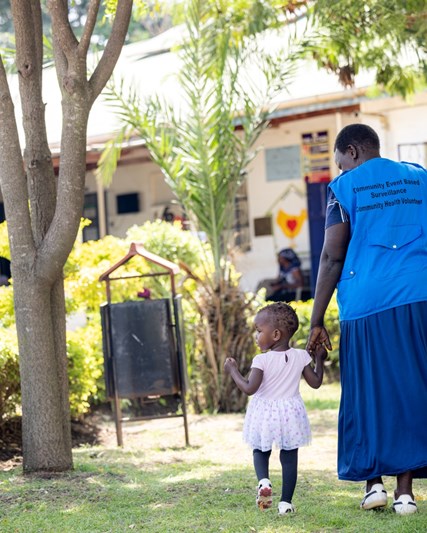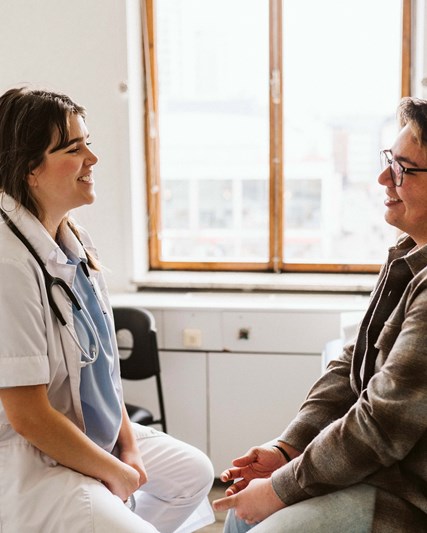Imagine trying to find a treatment for a health condition, but you have no idea what it actually is? This was the challenge facing researchers in the early 1980s, when rare and often untreatable health conditions were being reported among the MSM (men who have sex with men) community – but little was known about why.
The 40-year fight against HIV
The official start to the AIDS epidemic is considered to be June 1981 when the Morbidity and Mortality Weekly Report noted that a rare pneumonia, generally seen in severely immunocompromised patients, was being seen in previously healthy men who have sex with men (MSM).[1][2]
It would be several years before the Human Immunodeficiency Virus (HIV) was identified as the underlying cause.Marty St. Clair, a virologist who was working for Burroughs Wellcome at the time, remembers the scepticism around whether a treatment could ever be found.
The scientific community didn’t believe that it was possible to discover an agent which would have activity against HIV.

But Marty and her colleagues at Burroughs Wellcome – a predecessor company to GSK – were up for the challenge. They had a wealth of virology expertise, a history of successfully developing antiviral medicines and an established network of relationships with experts across the globe. The group went on to develop Zidovudine (AZT), the first medicine for the treatment of HIV and AIDS – which was approved in the US on 19 March 1987.
The Burroughs Wellcome scientists urgently began a search for a potential new medicine to treat HIV and AIDS. Thousands of potential candidates were run through screening tests - scientists tested all of Burroughs Wellcome’s marketed anti-viral and late-stage investigational medicines; they dug deep into their research labs for any compounds that might have a chance of being active against HIV. Screening began in June of 1984 and by November 1984, a candidate had been identified.

Marty remembers when she first saw the results of the screening test for what would become AZT. She thought that she had set up the experiment incorrectly because the results were so striking. When she repeated the experiment, the results were the same – the first step towards getting a treatment to patients was accomplished.
“I remember it well,” said Marty. “I looked at my first assay and every concentration I looked at prevented virus replication 100%. I knew it was big, but I don’t think I knew how big.”
Development of human medicines is a long process that can take up to 10 years or more and usually involves thousands of patients. In June of 1984, the Centers for Disease Control and Prevention (CDC) reported 4918 cases of AIDS in US with 2221 deaths.[1] By November 1984 the number had increased to 6993 reported cases of AIDS with 3342 deaths.[2] Clearly the need for a new medicine was urgent.
Human clinical trials designed to assess the safety of AZT began in mid-1985 and by early 1986, a larger clinical trial designed to assess the efficacy and safety compared to placebo had begun. By September 1986 an independent monitoring board stopped the trial and recommended that all patients receive the drug after seeing that 16 patients in the placebo group had died, while only one patient in the AZT group died.
The speed at which AZT moved from investigational medicine to approved medicine speaks to the dedication of the myriad people involved – researchers, government officials, people living with HIV and their families. The full regulatory submission to the FDA was made in December 1986 and the medicine was approved as a treatment for HIV in March 1987.
The impact for patients was huge, remembers Marty: “It wasn’t a cure and we’re doing much better today. But it was the first and it gave people hope.”

Continuing the fight against HIV
Almost four decades later, we continue to work to find new ways to treat and prevent HIV through ViiV Healthcare, a global specialist HIV company majority owned by GlaxoSmithKline plc (“GSK”), with Pfizer Inc. and Shionogi Limited as shareholders. ViiV Healthcare was born out of a partnership between GSK and Pfizer in 2009, with Shionogi joining in 2012 following a long-term collaboration with GSK on the joint development of several novel integrase inhibitors a type of antiretroviral therapy that helps halt HIV replication.
Since then, scientists at ViiV Healthcare have been working hard to find new ways of limiting the impact of HIV to the 38 million people living with HIV worldwide [3] by identifying new therapeutic solutions including antiretroviral drug candidates with unique mechanisms of action.
In 2015, ViiV Healthcare struck an innovative public-private partnership with the University of North Carolina at Chapel Hill, establishing Qura Therapeutics which focuses on developing a cure for HIV. This includes investigational work on “Induce and Reduce”, a strategy which attempts to make any hidden HIV visible to the immune system and attempts to enhance the patient’s immune system to combat the virus.
And nearly forty years on, Marty continues to work to find new ways to treat and prevent HIV transmission, in her role as clinical director for ViiV Healthcare. She is optimistic about the strides that have been made in HIV treatment – and the outlook for innovation in HIV.
“We’ve pretty much given people their lives back,” said Marty. “It’s a hopeful time.”
References:
[1] Morb Mortal Wkly Rep.1984;33(24):337
[2] Morb Mortal Wkly Rep.1984;33(47):661
[3] UNAIDS fact sheet https://www.unaids.org/en/resources/fact-sheet (accessed December 2020)




